You may already know that yoga is a great way to exercise, but could it also help with diabetes management? Here’s how it works, poses to try, and more.
How Yoga Is Beneficial For Diabetes Management?
In 2014, the World Health Organization found that there are more than 422 million people worldwide living with diabetes. Unhealthy lifestyle choices have been on the rise, and it is predicted that by 2030, diabetes will rank as the seventh leading cause of death. The good news is that making a few positive changes in your lifestyle can help you manage or even control diabetes. This article explores the advantages of incorporating yoga into your routine. Yoga goes beyond physical exercise; it positively impacts insulin production and reduces the risk of low blood sugar levels. Additionally, it plays a role in lowering bad cholesterol and triglyceride levels in the body. The benefits of yoga extend beyond the physical realm, offering a calming effect on the mind and fostering harmony between the mind and body.
By filling in gaps and addressing minor issues in the body’s pathways, yoga contributes to overall health and strength. Each yoga pose works to correct flaws in our daily lives, leading to a healthier body. It is important to choose poses carefully, considering your individual needs and preferences. Embracing yoga can be a transformative journey towards better health and well-being.
Continue reading to discover how incorporating these straightforward yoga poses into your routine can enhance your overall quality of life, paving the way for significant transformations.
Yoga for Diabetes: 11 Poses to Try For Diabetics Management
Yoga extends beyond relaxation for both body and mind, particularly for those managing diabetes. Specific poses have been associated with the potential to lower blood pressure and blood sugar levels, as well as enhance circulation. This has prompted many experts to endorse yoga as a valuable component of diabetes management.
Consistent yoga practice might not only address immediate concerns but also contribute to a reduced risk of additional diabetes-related complications, including heart disease. Embracing yoga as part of your routine can be a holistic approach to promoting overall well-being and mitigating the challenges associated with diabetes.
1. Legs-Up-the-Wall Pose
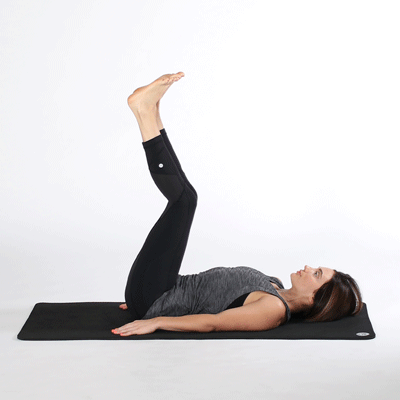
Experience relaxation with this restorative inversion, designed to alleviate stress, potentially reducing both blood pressure and blood sugar levels. Additionally, it offers relief from headaches, boosts energy, and enhances circulation.
Muscles targeted in this pose include:
- Hamstrings
- Pelvic muscles
- Lower back
- Front torso
- Back of the neck
To practice this inversion:
- Begin by folding a blanket or towel to sit on.
- Position yourself with your right side against a wall.
- Swing your legs up along the wall, gradually laying flat on your back to create a 90-degree angle against the wall.
- Keep your sitting bones as close to the wall as possible.
- Relax your neck, chin, and throat.
- Extend your arms out to the sides, palms facing up.
- Stay in this pose for 5 to 15 minutes.
- Release by gently sliding your legs down to the side.
This simple yet effective inversion can be a valuable addition to your routine, promoting relaxation and overall well-being.
2. Reclining Bound Angle Pose
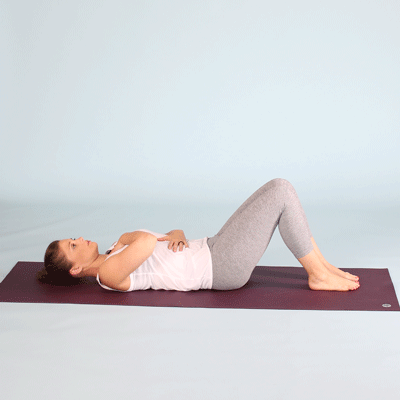
Explore the calming benefits of this restorative pose, designed to soothe your nervous system and contribute to stress reduction, potentially leading to lower blood pressure and blood sugar levels. This pose is also believed to stimulate abdominal organs, bladder, and kidneys.
Targeted muscles in this pose include:
- Adductors
- Groin muscles
- Pelvic muscles
- Psoas
To practice this calming pose:
- Begin in a seated position, bringing the soles of your feet together with knees out to the sides.
- Consider using a bolster under your knees for added support.
- Gradually lean back until your back is flat on the floor.
- Relax the area around your hips.
- Rest your hands alongside your body with palms facing up.
- For a deeper stretch in your legs and hips, gently press down on your thighs.
- Remain in this pose for up to 10 minutes.
- To release, use your hands to lift and press your knees together, slowly sitting all the way up.
Immerse yourself in the tranquility of this pose, allowing it to enhance your overall well-being by promoting relaxation and stress relief.
3. Seated forward bend
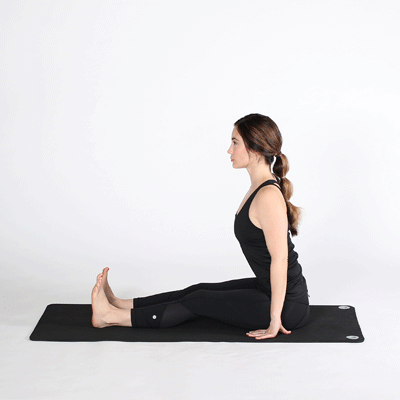
Engage in the therapeutic benefits of this forward bend, designed to not only lower blood pressure and facilitate weight loss but also potentially alleviate anxiety, headaches, and fatigue.
Muscles engaged in this pose include:
- Pelvic muscles
- Erector spinae
- Gluteus maximus
- Gastrocnemius
To practice this therapeutic forward bend:
- Sit on the edge of a folded blanket, extending your legs long.
- Consider placing a prop under your knees for added support.
- Visualize pressing the soles of your feet against an imaginary wall, drawing your toes back toward your shins.
- Root into your sit bones, lengthen your spine, and open your heart center.
- Hinge at your hips as you gently bend forward.
- Walk your hands down to your feet, pausing when you reach a comfortable position, allowing your torso to fold into your legs.
- Tuck your chin into your chest.
- Stay in this pose for up to 3 minutes.
Immerse yourself in the therapeutic nature of this forward bend, embracing its potential to enhance your well-being by promoting relaxation and addressing various physical and mental concerns.
4. Supported shoulderstand
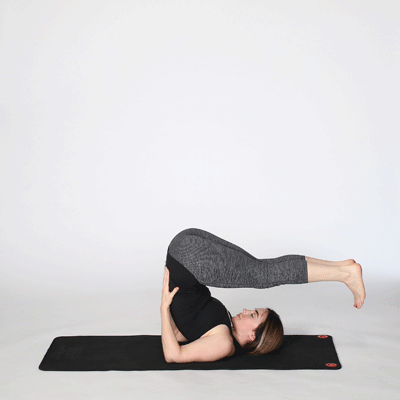
Experience improved circulation and a stimulated thyroid gland with this inversion, known for its potential to calm the mind and relieve stress. Engaging various muscles, this pose targets the rectus abdominis, trapezius, rotator cuff, and quadriceps.
To practice this invigorating inversion:
- Lie down flat on your back, placing a folded blanket under your shoulders.
- Align your shoulders with the edge of the blanket.
- Rest your arms alongside your body, palms facing down.
- Lift your legs straight up into the air.
- Slowly lower your legs back toward your head.
- Move your hands to your lower back for support, with your fingers facing upward.
- Raise your legs up so that your shoulders, spine, and hips form one straight line.
- Stay in this pose for 30 seconds to 3 minutes.
- Release by rolling your spine back down to the mat and lowering your legs to the floor.
Immerse yourself in the revitalizing effects of this inversion, harnessing its potential to enhance circulation, stimulate the thyroid gland, and bring a sense of calmness and stress relief to both body and mind.
5. Plow pose
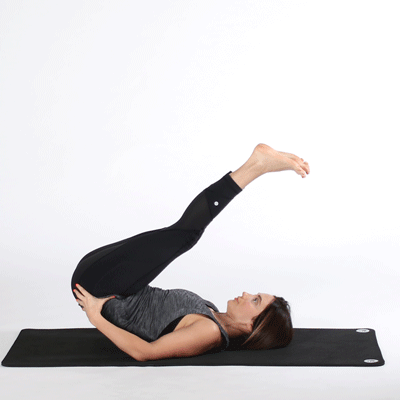
Engage in the revitalizing benefits of this inversion, renowned for its ability to stimulate the thyroid gland, enhance circulation, and alleviate stress. Beyond these, the therapeutic effects of this pose may extend to relieving backaches, headaches, and insomnia.
Muscles targeted in this inversion include:
- Rotator cuff
- Hamstrings
- Trapezius
- Spinal extensors
For a smoother transition into the plow pose, you may find it helpful to move from a supported shoulderstand.
To practice this invigorating pose:
- From a shoulderstand, gently bring your feet to the floor above your head.
- If your feet don’t reach the floor, utilize a pillow or block for additional support.
- Keep your hands on your lower back for added stability.
- Stay in this pose for 1 to 5 minutes.
- To release, roll your spine back down to the mat, raising your legs to form a 90-degree angle.
- Lower your legs back down to the mat.
Embrace the rejuvenating qualities of this inversion, incorporating it into your routine to stimulate your thyroid gland, boost circulation, and unwind both body and mind from stress.
6. Upward-Facing Dog
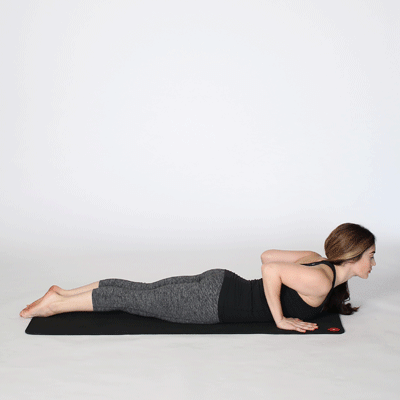
Embark on a journey of strength with this invigorating backbend, demanding substantial muscular engagement. Known for its potential to lower blood pressure, enhance circulation, and support weight loss, this pose also stimulates the abdominal organs.
Muscles actively engaged in this pose include:
- Gluteus maximus
- Triceps brachii
- Spinal extensors
- Quadriceps
- Hamstrings
To execute this empowering backbend:
- Begin by lying on your stomach with legs extended behind you.
- Place your palms flat on the floor, ensuring your forearms are perpendicular to the floor.
- Press into your palms, straightening your arms to lift your body and legs.
- Transition onto the tops of your feet.
- Maintain a slight bend in your elbows while activating thigh, arm, and abdominal muscles.
- Firmness in your buttocks and shoulder blades is crucial.
- Keep your gaze straight ahead, and soften your throat and neck.
- Stay in this pose for up to 30 seconds.
Embrace the challenge and rewards of this stimulating backbend, integrating it into your routine to build strength, enhance circulation, and foster overall well-being.
7. Bow Pose
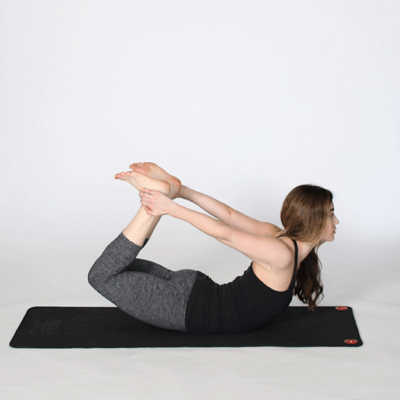
This bending backward pose not only opens up your chest but also activates your abdominal organs. It can be helpful in lowering blood sugar levels, relieving constipation, and addressing respiratory issues.
Muscles engaged in this pose include:
- Gluteus maximus
- Hamstrings
- Quadriceps
- Pectoralis major
To perform this pose:
- Lie on your stomach.
- Let your arms rest alongside your body with palms facing up.
- Bend your knees and bring your hands to the outside of your ankles.
- Lift your head, chest, and knees off the ground.
- Take deep breaths and look forward.
- Stay in the pose for up to 30 seconds.
- Exhale and release the pose.
- Place one hand on top of the other to create a pillow for your forehead.
- Gently shake your hips from side to side to relax your lower back.
- You can repeat this pose one or two times.
Enjoy the benefits of this backbend, promoting chest openness and activating abdominal organs for improved well-being.
8. Half Lord of the Fishes Pose
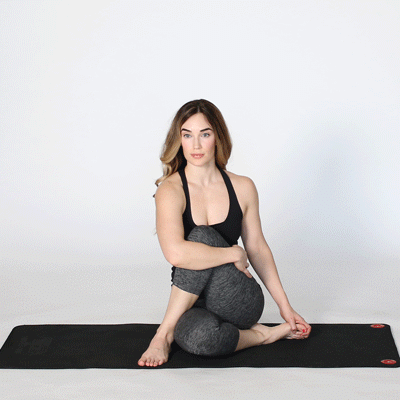
This twisting pose can activate your abdominal organs, possibly helping to lower blood sugar. It’s also believed to improve digestion and boost your energy levels.
Muscles involved in this pose include:
- Rhomboids
- Serratus anterior
- Erector spinae
- Pectoralis major
- Psoas
Here’s how you can do it:
- Sit cross-legged, then move your right foot outside your left hip.
- Cross your left leg over your right, placing your left foot on the outside of your right thigh.
- Root into your sit bones and lengthen your spine.
- Twist your body to the left.
- Place your left hand on the floor behind you.
- Bring your right upper arm to the outside of your left thigh. You can rest your hand on your thigh or keep the forearm lifted straight into the air.
- With each inhale, focus on lengthening and lifting.
- Twist a bit deeper to the right with each exhale.
- Look over either shoulder.
- Hold this pose for up to 1 minute.
- Repeat the same steps on the other side.
Enjoy the benefits of this twisting pose, promoting abdominal stimulation, improved digestion, and increased energy.
9. Supine spinal twist
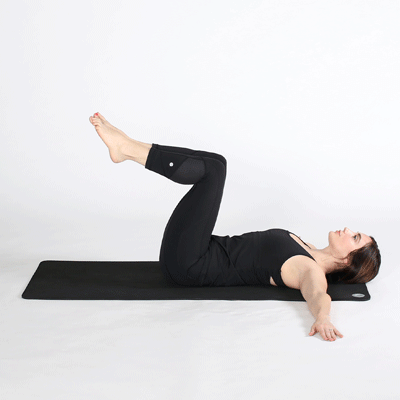
This calming twisting pose not only stimulates abdominal organs, which might help lower blood sugar, but also aids in relieving pain and stiffness in your spine, back, and hips.
Muscles engaged in this pose include:
- Erector spinae
- Rectus abdominis
- Trapezius
- Pectoralis major
Here’s how you can practice it:
- Lie flat on your back and bring your knees into your chest.
- Extend your arms to your sides with your palms facing down.
- Guide your knees over to the left side, aiming to keep them together and at hip level.
- Optionally, use your left hand to apply gentle pressure to your knees.
- Your gaze can be in any direction.
- Stay in this pose for at least 30 seconds.
- Repeat the same steps on the opposite side.
Embrace the soothing benefits of this restorative twisting pose, promoting abdominal stimulation while easing discomfort in your spine, back, and hips.
10. Child’s Pose
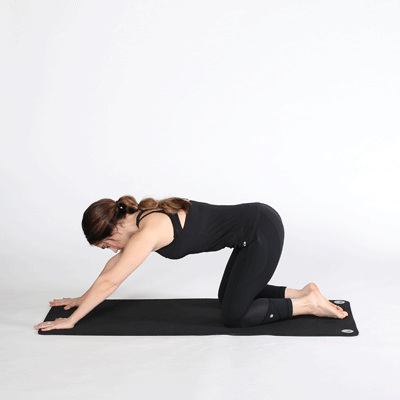
This restful pose promotes relaxation, potentially supporting the production of insulin-producing beta cells. It’s also beneficial for relieving back and neck pain, as well as reducing stress and fatigue.
Muscles involved in this pose include:
- Gluteus maximus
- Rotator muscles
- Hamstrings
- Spinal extensors
Here’s how to do it:
- Start in a kneeling position, ensuring your knees are hip-width apart.
- Sink back, bringing your buttocks to your heels.
- For added support, you can place a cushion between your thighs and calves.
- Lean forward to rest your forehead on the floor.
- Extend your arms in front of you, or let your arms rest alongside your body with palms facing up.
- Stay in this pose for up to 5 minutes.
- Release by lifting yourself up into a seated position.
Enjoy the tranquility of this resting pose, fostering relaxation and providing potential benefits for insulin production, back and neck relief, and overall stress reduction.
11. Corpse Pose
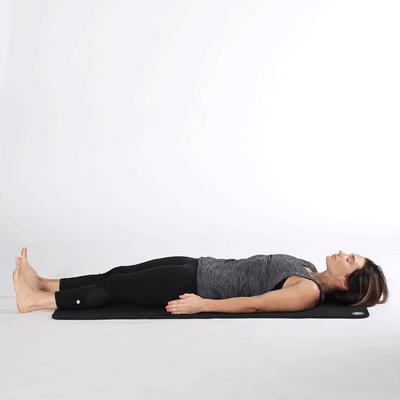
This soothing pose can help lower blood pressure, relax your body, and bring calm to your mind. It might also relieve headaches, fatigue, and insomnia. Typically, it’s done at the end of your yoga practice.
Here’s how to do it:
- Lie flat on your back, spreading your feet a little wider than your hips.
- Rest your arms alongside your torso with your palms facing up.
- Align your torso to form a straight line, creating a Y shape with your body.
- Let your body gently press into the floor, fully releasing any tension.
- Stay in this pose for 10–20 minutes.
Embrace the tranquility of this restorative pose, offering relaxation and potential relief from various discomforts at the end of your yoga session.
Does it really work?
A review conducted in 2016 revealed that practicing yoga can be highly beneficial for managing type 2 diabetes. The researchers found positive improvements in blood sugar levels, lipid levels, and body composition among individuals who incorporated yogic practices. The limited data available in the review also hinted at potential benefits such as the reduction of oxidative stress and blood pressure. Additionally, there were suggestions that yoga might enhance pulmonary and autonomic function while reducing the need for medication. Despite these promising findings, it’s important to note that more research is required to confirm and build upon these results. While the initial outcomes are encouraging, further studies will help provide a more comprehensive understanding of the impact of yoga on type 2 diabetes management.
Bottom Line
Incorporating regular yoga practice into your routine can contribute to an improved overall sense of well-being and may be beneficial in managing diabetes. If you’re new to yoga, it is advisable to consult with your doctor before integrating this exercise into your daily life. They can discuss potential risks and provide guidance on establishing and maintaining a healthy lifestyle. For those who prefer practicing at home, there are various resources available, such as books, articles, and guided online classes, to help you develop your yoga practice. Start with a short session of around 10 minutes per day and gradually increase the duration.
If you opt for studio classes, communicate with your teacher about your diabetes and your specific goals, enabling them to tailor a practice that aligns with your needs. Open communication ensures a safe and effective yoga experience.
